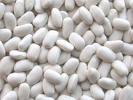Here are 4 categories of Must Have Foods that you want to incorporate into your daily diet.
1. Oils - Oils from corn, sunflower, olive or canola, nuts and fatty fish are important to lower cholesterol levels. Canada's Food Guide recommends 2-3 tbsp of unsaturated fat each day. Limit nuts to 1/4 cup. Aim for fish 1-2 times per week.
2. Colourful Vegetables - Dark leafy greens (spinach, kale, collards, Swiss chard), and deep orange vegetables (butternut squash, sweet potatoes) offer protection against some cancers, blood pressure and eye health. Vegetables should be a part of every dinner and raw vegetables make a great mid-day snack.
3. Low-fat Dairy Products - Skim milk, yogurt, and low-fat cheese can offer the benefit of calcium, vitamin D and potassium which may lower the risk of developing certain cancers i.e. colon, and lowering blood pressure. Top your All Bran Buds with skim milk or a serving of low-fat yogurt at breakfast or as a mid-day snack.
4. Beans - Lentils, chick peas, kidney beans etc. are high in fibre which is effective in lowering cholesterol, lowering blood pressure and helping you stay "regular". Aim for at least one vegetarian meal per week that includes a serving (3/4 cup) of beans.
I'd love to hear your strategies and share your recipes that include these Must Have Foods!
Inspiration sourced from: http://www.cspinet.org/nah/













